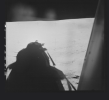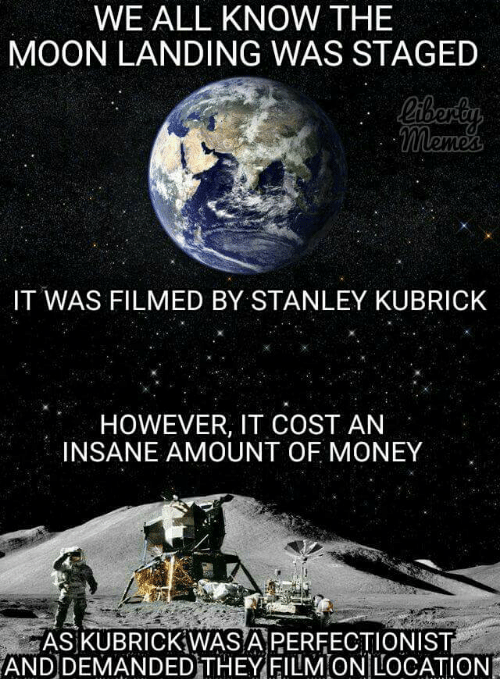Hi Woodsman
It's good that you've been researching the shadows, I've been doing it too, I'm an amateur but I'm enjoying it. Been browsing the Apollo Flickr archive and found these images taken from within the Apollo 14 LEM. Clearly shows double shadows, can't see any evidence of double exposure and the entire film magazine is there to see including the calibration chart
Apollo 14 Magazine 65/KK. Below is a screen snip from one of the images. There are 15 photos in all, view the last 6 and watch the overlapping LEM shadow move.
View attachment 30577
There are logical frameworks which the researcher needs to encounter and start building if they're going to get anywhere.
For me, a big, useful piece of my Knowledge Map was painted by looking at the claim,
"The same mountains appear in different photos of different foregrounds. They don't change or move! They must be part of a painted studio backdrop."
Great! I could test that.
I took two images the plaintiff was objecting to, ones with the same mountains on the horizon but with two different foregrounds and I overlaid them in Photoshop, with the top layer made partially see-through, enabling me to see how well they lined up.
They didn't. They came close, but the same mountains and middle ground hills in the two photos had been shot from different angles, and you could tell.
Great. Test done. These were not painted backdrops, but photographs of real features.
Now here's the interesting thing: this experiment didn't just invalidate the "painted studio backdrop" claim by proving that the action was taking place in an area with
actual mountains.
It ALSO meant that any claims which require a fake studio environment in any capacity could be dispensed with. -Which is most of them.
Next logic bomb, and this is one you can benefit from because you seem stuck on shadow and light artifacts: If the scene was shot outdoors as the above logic makes evident, then they would have had to have groomed several acres perfectly so that there were no plants or rogue lights or organic debris. There was a lot of powdery dust evident which couldn't move or change.
They would have had to shoot the whole thing during an extended period of zero wind, zero rain, zero snow or clouds. In 1969, there were no post-production digital effects available to ease over the problems.
With the attention to detail required to accomplish this feat, with the hoaxers disciplined and paranoid enough to create and manage such a shooting environment, (it was claimed by some conspiracy theorists that
Stanley Kubrick himself oversaw the project), then they were obviously alert to the minutia of photographic evidence and were very smart and very good at their jobs.
Is it then reasonable to suggest that these same hoaxers would be so damned idiotic as to make gross, lazy errors with their lighting rig?
No.
Those two logical tests were for me enough to prove the hoax claims as unreasonable.
There are mundane explanations for rogue light sources; the hills and geologic features themselves.
If you want to see what is involved with creating a fake moon scene, look at this article where professional film makers were tasked with doing exactly that with modern film equipment in the recent film
First Man, and then judge for yourself if such a feat could have been flawlessly accomplished in 1969:
In order to stay within the budget, they had to find their location in the Atlanta area, where most of the film was shot. Miracle of miracles, they were able to locate a perfectly colored quarry there. Shaping it up was a massive undertaking. “We’d have to sculpt the land over five acres, sculpt the background so we could gradually take the landscape up,” Crowley recalls. “They took all their machines out and really helped sculpt the bulk of it, and then we would take the 500-foot area for where the landing’s done. So we pretty much matched it perfectly, crater-by-crater, rock-by-rock, because it was so well documented.”
Why the size? Well, it had to be a big space because they wanted to minimize the amount of computer touch-up needed to blot out trees and other extraneous objects — they’d be shooting at night, but such things might still peek out for a viewer, and too much effects work can detract from the magic of IMAX. [...]”
~
How First Man Faked the Moon Landing
Bearing in mind that they didn't have to deal with the persistent fine dust issue. They conveniently omitted showing it, and in fact cheated a lot on the Moon surface shots and thus avoided the many challenges which would have come with such a shooting environment. And frankly, it still didn't look as real as the NASA media from 1969!





